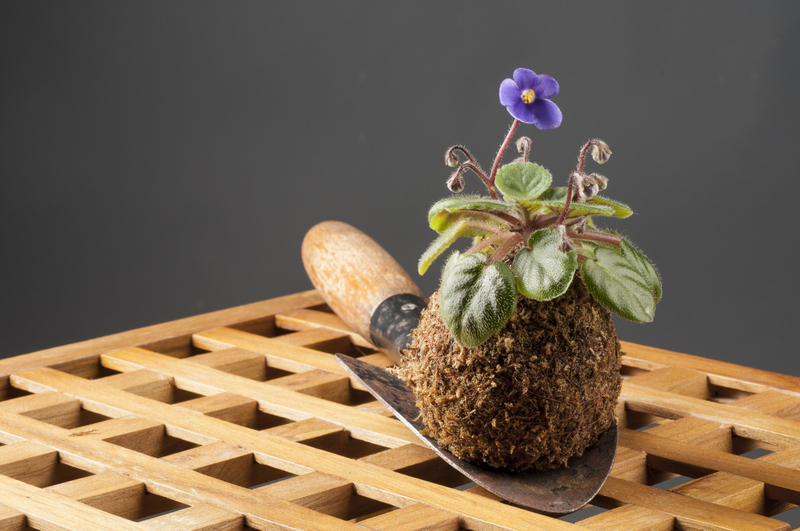Making Gardening Fun and Engaging for Children
Posted on 27/08/2025
Making Gardening Fun and Engaging for Children
Gardening is more than just a weekend hobby; it's a dynamic way to connect children with nature, spark curiosity, and lay the foundation for lifelong healthy habits. Whether you have a sprawling backyard or a modest balcony, introducing kids to gardening can be both fun and educational. In this comprehensive guide, discover creative strategies and activities that make gardening enjoyable, interactive, and truly memorable for kids.
Why is Gardening Beneficial for Children?
Before diving into creative ideas, it's crucial to understand the transformative benefits of gardening for young minds. Engaging children in gardening activities fosters:
- Sensory development: Touching soil, smelling flowers, and observing insects stimulate all five senses.
- Responsibility and patience: Taking care of plants teaches kids to be responsible and patient as they wait for seeds to grow.
- Science and environmental literacy: Hands-on gardening introduces kids to biology, ecology, and sustainability.
- Healthy eating habits: When children grow their own fruits and vegetables, they're more likely to eat them!
- Confidence building: Successfully nurturing a plant provides a sense of achievement and builds self-esteem.
Making gardening fun and engaging for children transforms it from a chore to an adventure. Let's explore some effective ways to make gardening an exciting journey for your little ones.

Choosing the Right Garden Space
Adapting to Your Environment
Not every family has access to a large backyard, but that shouldn't stop you! Kids can enjoy gardening in any setting:
- Backyard gardens: Ideal for families with space; children can help select garden beds or plots.
- Patio containers: Use pots, buckets, or grow bags to create a portable garden on patios or balconies.
- Indoor gardens: Windowsills and vertical planters make urban gardening with kids possible year-round.
- Community gardens: Local plots foster social connections and community spirit.
Kid-Friendly Garden Setup Tips
- Choose a location with easy access to water and sunlight.
- Ensure pathways are clear, safe, and child-sized for comfortable exploration.
- Include easily reachable, raised beds or small containers for little hands.
- Reserve a dedicated patch just for children's projects--let their creativity run wild!
Selecting Plants Kids Will Love
Best Options for Children's Gardens
Make gardening appealing by choosing varieties that are easy to grow, quick to yield, or simply fascinating for children. Try these favorites for fun and engaging gardening experiences:
- Sunflowers: Quick-growing and towering, these are awe-inspiring for kids to watch over summer.
- Pumpkins: Fascinating growth, and ideal for fall harvesting and carving.
- Strawberries and cherry tomatoes: Sweet, bite-size, and irresistible straight from the plant.
- Snap peas and beans: Easy to plant and fun to pick and eat right off the vine.
- Radishes and lettuce: These grow quickly, providing almost instant gratification.
- Herbs (basil, mint, chives): Quick, fragrant, and can be used in the kitchen by little chefs.
- Nasturtiums and marigolds: Edible, bright flowers that attract pollinators and look beautiful.
Encouraging Exploration
Allow your child to choose a few plants themselves. This sense of ownership increases their investment and excitement in the gardening process. Engage children with plants that provide sensory experiences--fragrant herbs, fuzzy leaves, or vibrant colors.
Fun Gardening Activities for Children
1. Themed Gardens
Transform your garden into a playground for imaginations by creating themed spaces. Try these ideas:
- Pizza garden: Grow tomatoes, basil, oregano, and peppers, then harvest for homemade pizza nights!
- Fairy or gnome garden: Design miniature landscapes with tiny figurines and colorful flowers.
- Butterfly or pollinator garden: Plant milkweed, lavender, and zinnias to attract butterflies and bees.
- Sensory garden: Include plants for touch (lamb's ear), smell (lavender), sound (grasses), and taste (mint).
2. Creative Containers and Planters
Keeps things exciting by upcycling household items such as old boots, toy trucks, or teapots into quirky planters. This creative activity encourages resourcefulness and personalizes the garden space, making gardening even more engaging for kids.
3. Garden Art Projects
- Make plant markers: Craft labels from painted rocks or popsicle sticks.
- Decorate stepping stones: Use non-toxic paints or mosaic tiles.
- Build bug hotels: Stack twigs, pinecones, and bamboo for insect habitats.
- Create wind chimes: Use recycled materials and let children design their own sounds.
Integrating art boosts creativity and gives children a sense of pride in their growing garden.
4. Fun with Watering
- Let kids use child-sized watering cans or the garden hose (under supervision).
- Set up a rain gauge and chart precipitation together for a mini science project.
- Have "watering days" where kids race to water their patch before the timer runs out--make it a game!
5. Scavenger Hunts and Nature Walks
Plan scavenger hunts in the garden. Include items such as:
- A worm
- A flower bud
- A buzzing bee
- A smooth pebble
- Different colored leaves
Nature walks in your neighborhood or local parks further expand children's observation skills and love for the outdoors.
Incorporating Learning into Gardening
Math, Science, and More
Making gardening educational yet enjoyable for children can be simple--use the garden as an outdoor classroom:
- Math: Measure plant growth, count seeds, estimate harvest sizes, and track rainfall.
- Science: Discuss life cycles, metamorphosis (butterflies!), photosynthesis, and composting.
- Art: Sketch plants in a garden journal, design flower arrangements, or paint garden scenes.
- Literacy: Create plant labels, read garden-themed books, or write stories about "a day in the garden."
Hands-On Experiments
Try these simple experiments to keep learning fun and hands-on:
- Sprout seeds in a jar: Let kids watch the roots and shoots develop up close.
- Compare soil types: Test sand, clay, and loam for drainage and plant growth.
- Observe pollinators: Record the different insects seen visiting the garden.
- Set up a compost bin: Teach decomposition and sustainability by composting kitchen scraps.
Tips for Nurturing a Lifelong Love of Gardening
Empower Participation and Creativity
- Assign age-appropriate tasks: Young children can sow seeds and water, while older children can weed and harvest.
- Let kids make decisions: Involve them in seed selection, garden design, and planning.
- Celebrate successes: Take photos, host a "Garden Graduation," or cook a meal together using homegrown veggies.
- Visit botanical gardens, farms, or garden centers: Exposure to different plants and ideas inspires enthusiasm.
Encouraging Curiosity
Use mistakes as learning opportunities. Not every plant will thrive, and that's okay! Discuss what happened and how to try again, reinforcing resilience and curiosity.
Overcoming Common Challenges in Gardening with Children
Patience and Short Attention Spans
- Opt for fast-growing plants: Quick wins keep kids engaged.
- Keep sessions short and frequent: A little gardening each day is more effective than long, exhausting stints.
Mess and Safety
- Embrace the mess! Gardening is naturally dirty work--dress appropriately and enjoy it.
- Use child-safe tools: Blunt-edged and lightweight tools prevent accidents.
- Teach garden safety: Remind children to wash hands, and always supervise near sharp tools or chemicals.
Gardening Through the Seasons: Year-Round Engagement
Spring and Summer
- Plant sun-loving flowers and veggies.
- Enjoy watering, weeding, and harvesting outdoors.
- Track growth and create a journal with photos or drawings.
Autumn
- Harvest late crops and collect seeds for next year.
- Rake leaves together and add them to the compost bin.
- Create autumn crafts from natural materials.
Winter
- Grow herbs or microgreens indoors on a sunny windowsill.
- Plan next season's garden with catalogs or online tools.
- Read garden-themed books or watch nature documentaries.

Resources for Growing Gardening Enthusiasm
Books and Online Guides
- Children's gardening books: Stories and activity guides abound--check your local library or bookstore.
- Garden apps: Interactive apps help explore plant identification, weather, and more.
- Kids' gardening clubs: Many botanical gardens offer programs tailored just for families.
Connecting with Community
- Attend plant swaps or local gardening events.
- Share experiences with neighbors or school groups.
- Document your journey online or through photo albums.
Conclusion: Growing Together for a Greener Tomorrow
Making gardening fun and engaging for children is about more than cultivating seeds--it's about nurturing curiosity, wonder, and stewardship for the earth. By providing interactive, age-appropriate gardening opportunities, you give children skills and memories that last a lifetime. Whether through themed gardens, innovative activities, or simply sharing time together outdoors, gardening creates bonds between children, families, and nature.
Start your gardening adventure today, and watch as your young gardeners blossom alongside the flowers, vegetables, and fruits they help grow. The sprout you plant now could become a lifelong passion for the generations to come!

